
About Oaks (home) | Map | Plant List | Cultivar/Species Information | Sources | Other Campus Oaks of Interest
Latin Name: Quercus macrocarpa
Common Name: Bur Oak
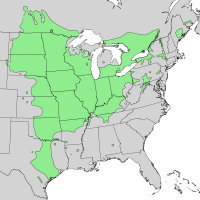
Cultivar:
Family: Fagaceae
Division: White
Native range: Nova Scotia to Pennsylvania, west to Manitoba and southwest to Texas.
Introduced:
Sun/Shade: Sun
Height × Width: 70' - 80' × equal or greater, in the wild
Form: Pyramidal when young; oval, broad, even open, with age
Zones: 3 - 8
Flower: Monoecious. Pistillate catkins (male inflorescence).
Leaves: 4" - 10" × half; lower 2 -3 lobe pairs, upper 5 - 7 lobe pairs. Dark green and lustrous above, grayish-whitish tomentose beneath. Petiole (leaf "stem") 1 ¼" and downy.
Fall Color: dull yellow, yellow-brown.
Fruit: Nut. Acorns are solitary and usually stalked. ¾" - 1½", broadly ovoid, downy at apex, enclosed ½ or more in very fringed deep cap. Matures in one season.
Buds: Sharp and pointed or blunt, pale pubesence.
Bark: rough, deeply-furrowed and ridged, dark gray – gray-brown
Wildlife: Numerous bird and mammal species. For detailed information about insect and other faunal associations see Illinois Wildflower's Quercus macrocarpa page.
Disease issues: None serious
Cultural Uses: For examples of indigenous uses, see http://naeb.brit.org/uses/search/?string=Quercus+macrocarpa
Folklore:
Notes: The quintessential prairie oak.
See Dicke and Bagley, Silvae genetica 29:171-196 (1980).
Walter Bagley of the Nebraska Forest Service says he has seen acorn involucre not fringed. (Dirr.)
Where to find Quercus macrocarpa in Maxwell Arboretum: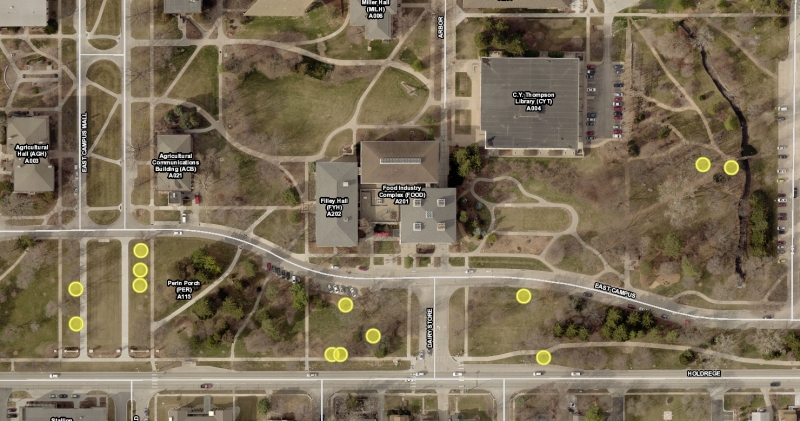
←Previous Oak → NEXT OAK
All photographs from Earl G. Maxwell Arboretum unless otherwise noted.
New foliage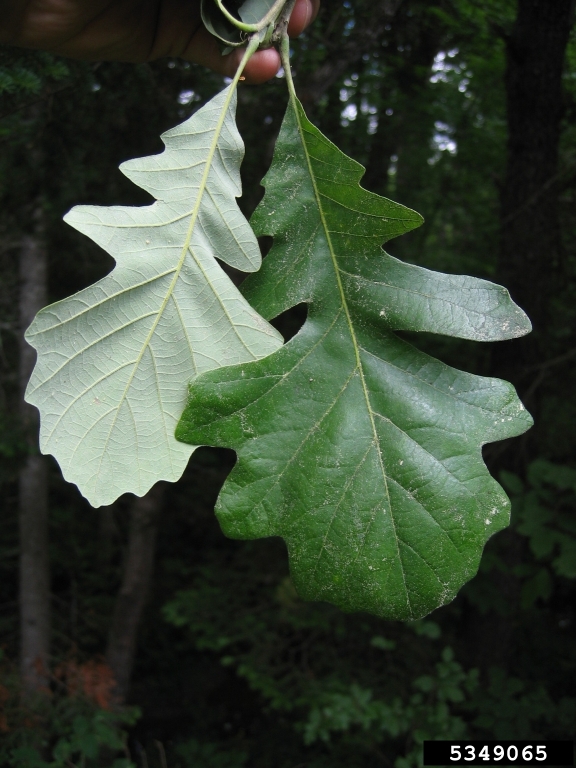
Foliage, dark uppper and pale lower surfaces as well as two set of lobes.
Keith Kanoti, Maine Forest Service,Bugwood.org
Acorns
Nebraska Statewide Arboretum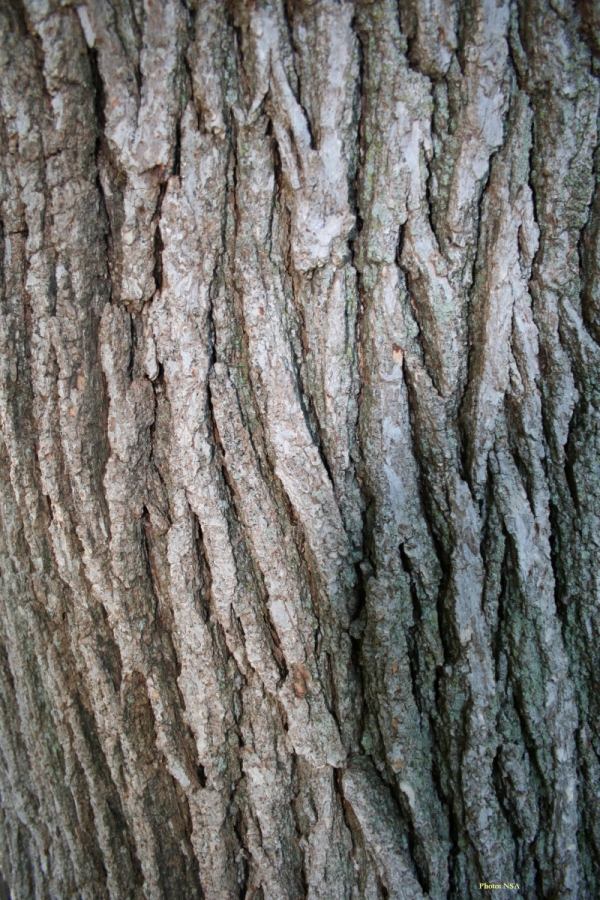
Bark
Nebraska Statewide Arboretum
Foliage and Acorns
Nebraska Statewide Arboretum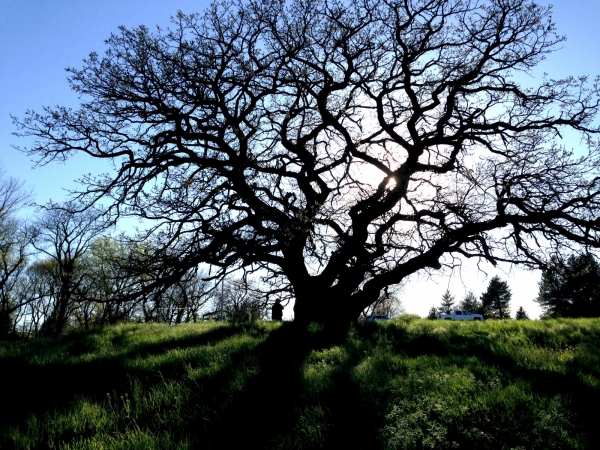
Form in open space
Justin Evertson for the Nebraska Statewide Arboretum